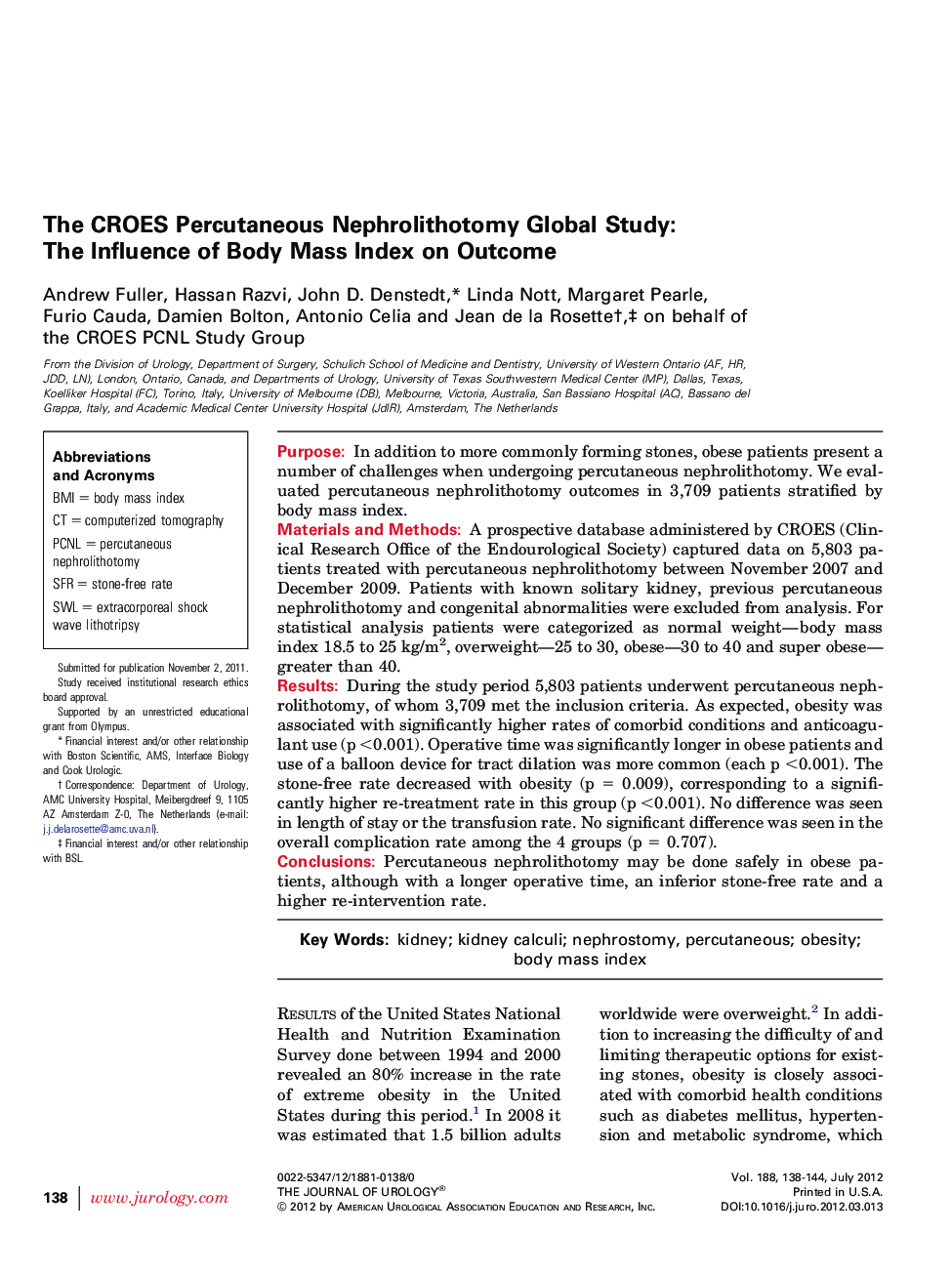| کد مقاله | کد نشریه | سال انتشار | مقاله انگلیسی | نسخه تمام متن |
|---|---|---|---|---|
| 3866688 | 1598933 | 2012 | 7 صفحه PDF | دانلود رایگان |

PurposeIn addition to more commonly forming stones, obese patients present a number of challenges when undergoing percutaneous nephrolithotomy. We evaluated percutaneous nephrolithotomy outcomes in 3,709 patients stratified by body mass index.Materials and MethodsA prospective database administered by CROES (Clinical Research Office of the Endourological Society) captured data on 5,803 patients treated with percutaneous nephrolithotomy between November 2007 and December 2009. Patients with known solitary kidney, previous percutaneous nephrolithotomy and congenital abnormalities were excluded from analysis. For statistical analysis patients were categorized as normal weight—body mass index 18.5 to 25 kg/m2, overweight—25 to 30, obese—30 to 40 and super obese—greater than 40.ResultsDuring the study period 5,803 patients underwent percutaneous nephrolithotomy, of whom 3,709 met the inclusion criteria. As expected, obesity was associated with significantly higher rates of comorbid conditions and anticoagulant use (p <0.001). Operative time was significantly longer in obese patients and use of a balloon device for tract dilation was more common (each p <0.001). The stone-free rate decreased with obesity (p = 0.009), corresponding to a significantly higher re-treatment rate in this group (p <0.001). No difference was seen in length of stay or the transfusion rate. No significant difference was seen in the overall complication rate among the 4 groups (p = 0.707).ConclusionsPercutaneous nephrolithotomy may be done safely in obese patients, although with a longer operative time, an inferior stone-free rate and a higher re-intervention rate.
Journal: The Journal of Urology - Volume 188, Issue 1, July 2012, Pages 138–144